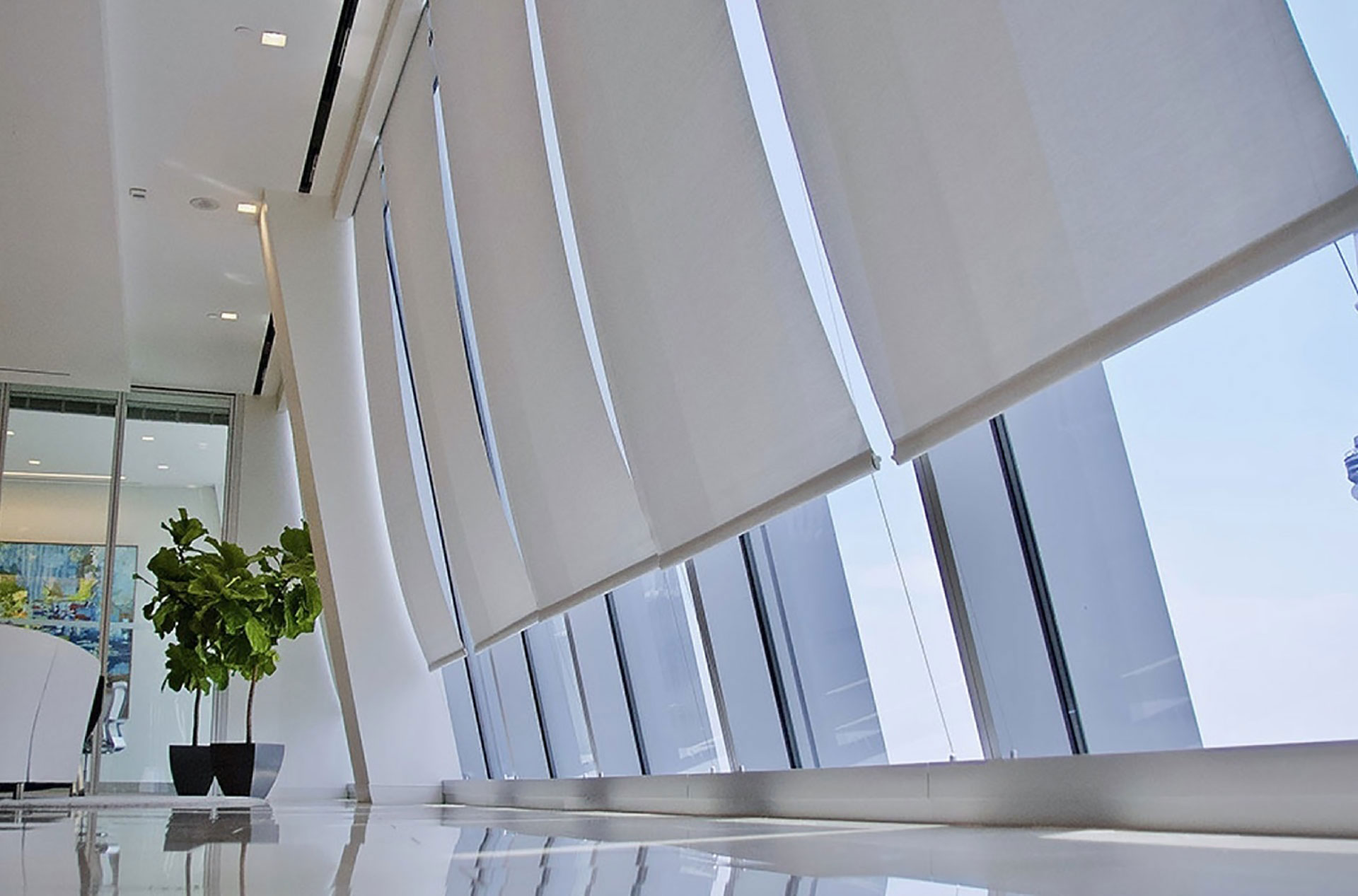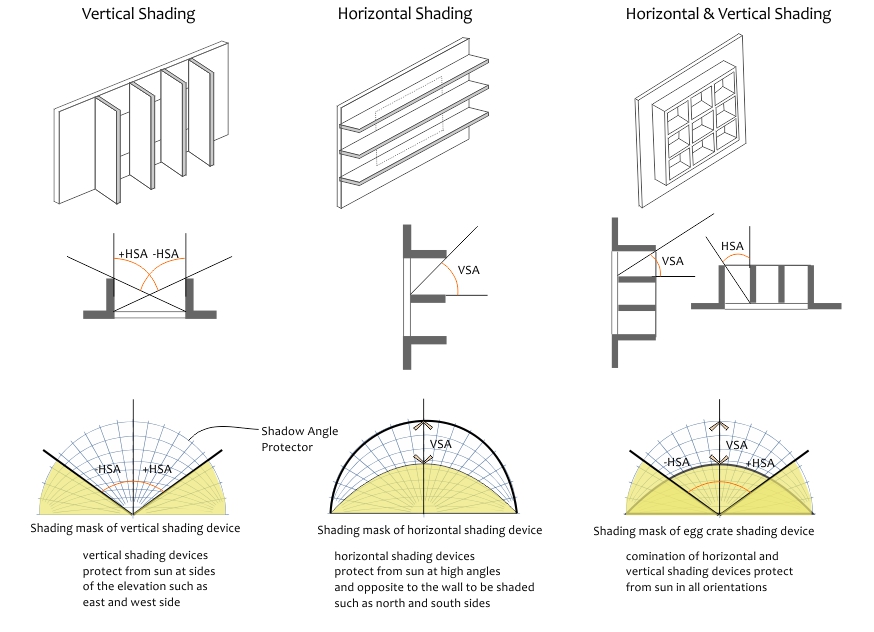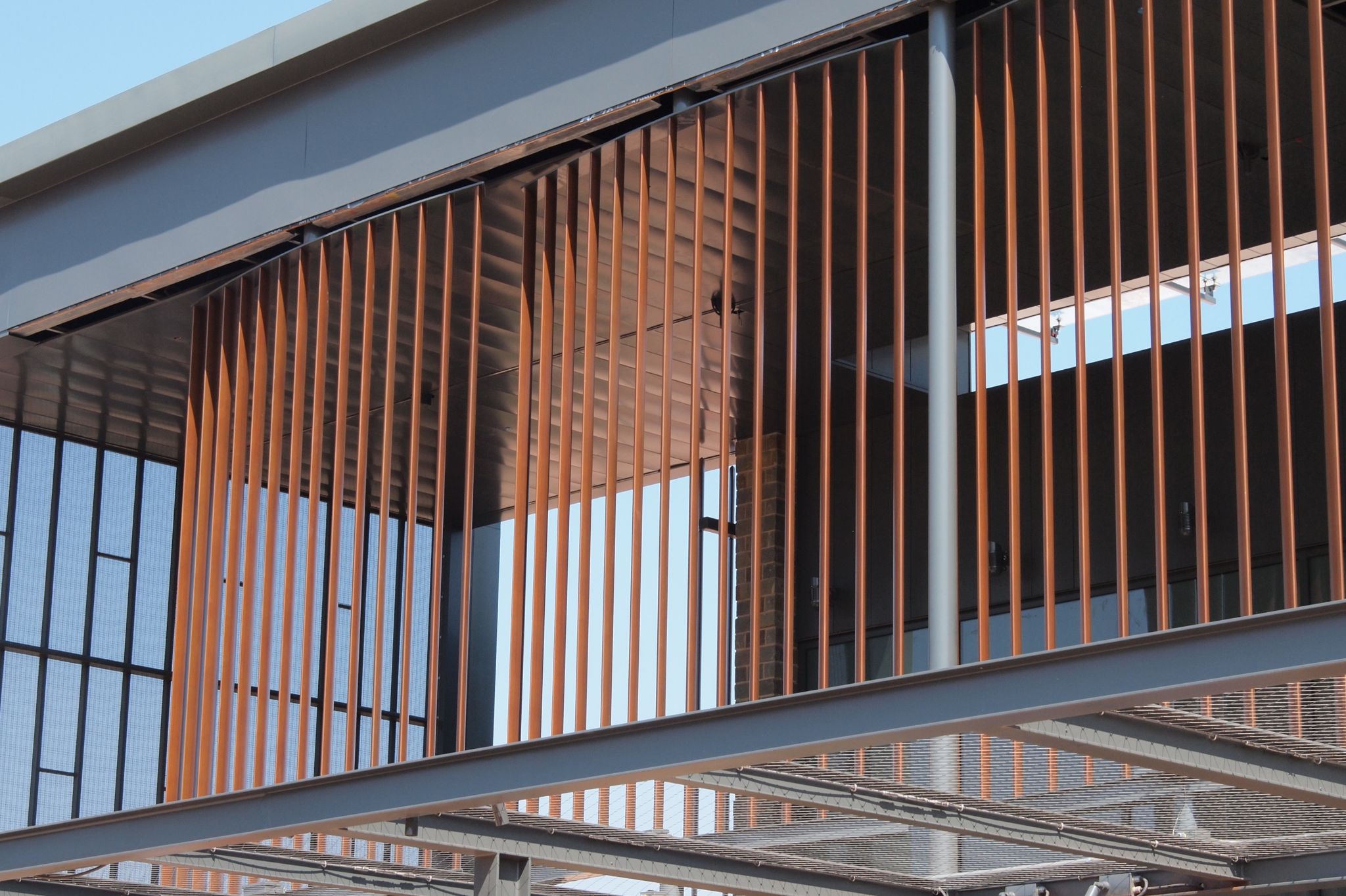
Shading devices
Shading devices are important elements in the design of buildings, as they can significantly reduce solar heat gain and glare, while allowing natural light to enter the building. They can be designed to be fixed or adjustable, depending on the level of control desired by the occupants.

Automated Shading System Everything you should know
The demonstrated shading system design meets all the necessary requirements for comfort conditions in the space, that include efficiency of shading for mitigation of harmful (excessive) solar gains (that may lead to space overheating and increase in cooling loads) and acceptable amount of useful light entering the space.

Safal Corporate Office Vertical, Shading device, Facade
The egg-crate shading devices combine both vertical and horizontal shading elements together and block sunlight and solar radiation from all directions, which make them own a high shading efficiency and could provide optimal shading in regions of hot climate. The horizontal elements control the ground glare.

Shading Fairconditioning
Therefore, vertical sun shading devices like fins, vertical louvres or even trees are more suitable. Horizontal sun shading will have little effect unless it is extremely deep and extends far from the house. North and South Facing Sun Shading. However, the sun's angle in the north and south is much higher. The closer you live to the equator.

Vertical Shading Device While walking in Olaiyah Street, I… Flickr
Shading devices on the external side of the window include shutters, awnings, canopies, blinds, and projecting horizontal and vertical fins. Correctly designed, these sun controls are the most effective of all for reducing solar radiation since the absorbed heat is dissipated externally.

Sun Shading Devices Architecture The Architect
diagram and can be overlaid to it to show the shading effects caused by vertical and horizontal overhangs, with respect to a specific point of view, which must coincide with the centre of the chart. This produces the shading mask of the solar shading device. The pseudo-horizontal curved lines represent the influence of shadows created by overhangs

Shading Devices 2030 Palette
Horizontal shading devices are typically useful on south elevations, while vertical shading devices are well suited for east and west elevations.

Aluminum solar shading SPECIAL FINS Levolux steel / extruded
2. Reduced Energy Loss. External window shades reduce solar heat gain and improve the comfort inside a building. Their use also ensures that your cooling and heating bills are reduced to a minimum. That's why shading devices are a vital component in energy-efficient buildings and architecture. Sun shading reduces the energy requirement for.

Exterior vertical sliding fabrics as solar shading [071] filt3rs
When vertical shading devices were oriented 0-degree angle as in Case 1, a higher air speed was distributed across a DSF air cavity and the vertical convective currents were created. On the other hand, in case of 90-degree angle oriented as in Case 7, a higher air velocity was created near the interior and exterior glazing except for around.

NBBJ Creates High Tech Shading System for Buildings ArchDaily
77 companies | 299 products My filters vertical Delete all Manufacturers A A. Zahner (5) Accsys Technologies (4) AFS International B.V. (1) AIRSUN (4) ALUCOBOND (2) ALUMIL S.A. (1) ALUMINCO (1) AMI A. LENGLART (1) ANDRITZ EUROSLOT Architecture (1) ArcelorMittal Construction (1) Arconic Architectural Products SAS, Merxheim/Frank (2) B Betsinor (4)

External Vertical Sun Shading BRISOLEY STORSAN MOVABLE SUNSHADES
Structural controls like 'external shading devices' are essential environmental controls that either obviate or greatly reduce the need for mechanical heating and cooling to maintain thermal comfort inside buildings, by controlling heat gain through openings.

vertical shading devices Google Search Shading device
Vertical fins and egg-crate designs for other orientations. Adjustable shading devices can be repositioned to allow for seasonal temperature variations or user control during unusually warm or cool periods.

10 key questions about exterior shading Construction Specifier
Design of Suncatchers. Suncatchers are vertical sunlight-redirecting devices parallel to the building facade. As vertical devices, they are best for intercepting low-angle sunlight on the east and west side of buildings. Suncatchers shade low angle sun and may block views. Light they catch tends to be reflected downward, witch can result in glare.

Shading Devices 2030 Palette
Well-designed sun control and shading devices can dramatically affect indoor temperature. The thermal performance of interior spaces in hot arid desert is highly influenced by various passive design techniques, e.g. space dimensions, facade colors, fenestration ratio, glazing type; and vertical and horizontal shading devices.

Vertical louvered shutters in BrasíliaDF [311] filt3rs Facade
w, D - geometry of vertical shading device (see picture above) Φ - solar azimuth, Ψ - plane azimuth Solar-Fabrik, solar modules used as shading devices and as part of a facade image courtesy: Solar-Fabrik AG, Freiburg Optimization of Strings. Shading losses of photovoltaic systems can not be avoided (if shading occurs), but at least portion.

Vertical Aluminum Sun Shading Louvers Aerofoil Fixed Electric Manual
Exterior shading devices such as awnings or overhangs can significantly reduce cooling loads Scope Ensure adequate protection from solar heat gain through windows, doors, and skylights to reduce cooling energy consumption, improve a home's resistance to extreme heat events, and improve comfort.